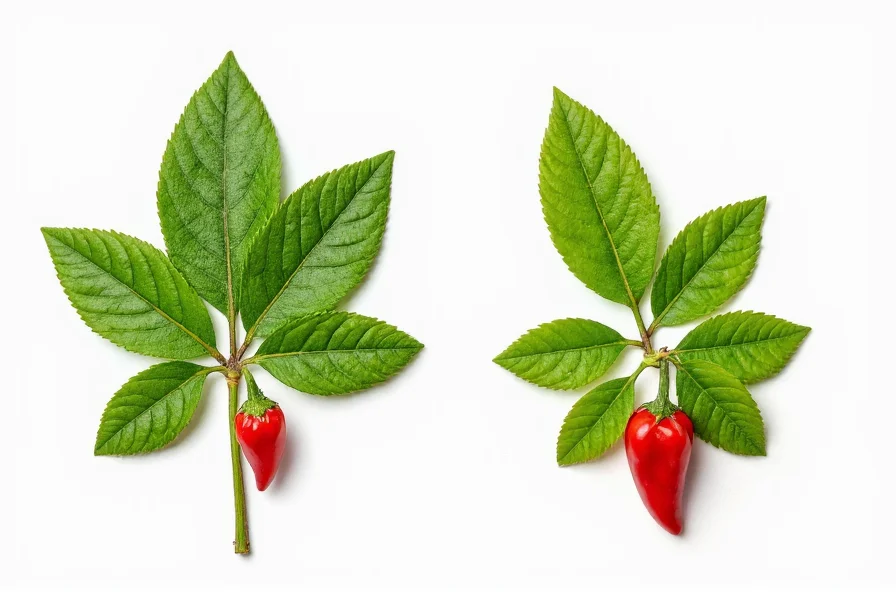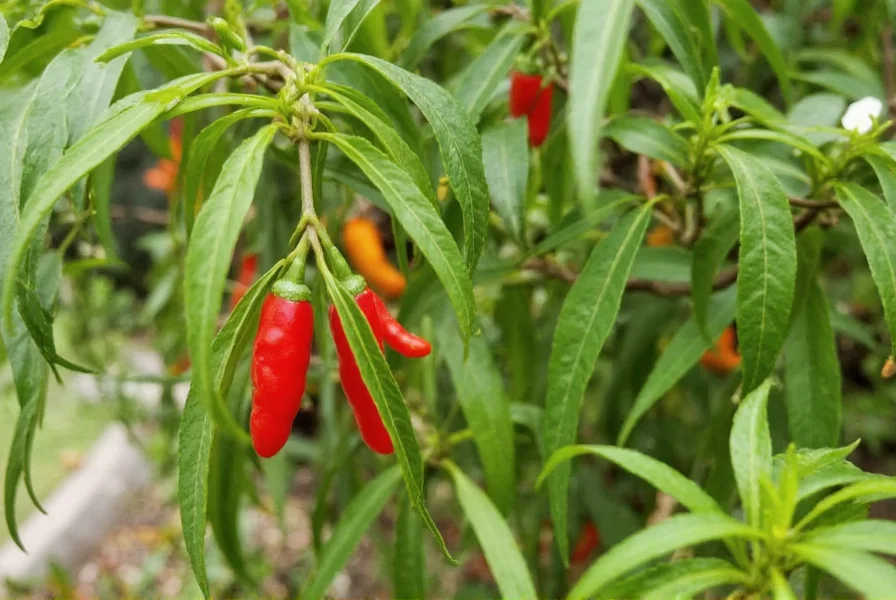The term "pepper tree" primarily refers to two distinct species: Schinus molle (Peruvian pepper tree) and Schinus terebinthifolius (Brazilian pepper tree). These ornamental trees, native to South America, produce small red berries resembling peppercorns but are unrelated to true black pepper (Piper nigrum). While often used in landscaping, several species are invasive in regions like California and Florida, with Brazilian pepper trees classified as noxious weeds due to their aggressive growth and ecological impact.
Understanding the Pepper Tree Family: Schinus vs Piper
When researching the pepper tree characteristics, it's crucial to distinguish between the Schinus genus and true pepper plants. The confusion stems from visual similarities in their berries, though they belong to entirely different plant families. Schinus species (Anacardiaceae family) contain compounds that can cause skin irritation in sensitive individuals, unlike Piper nigrum (Piperaceae family) which produces culinary black pepper.
Botanists emphasize that identifying pepper tree species correctly prevents potential health risks and ecological damage. The Peruvian pepper tree (Schinus molle) features weeping branches and pinkish berries, while the Brazilian pepper tree (Schinus terebinthifolius) has broader leaves and brighter red berries that persist through winter. Both produce allelopathic chemicals inhibiting growth of competing plants—a key factor in their invasive potential.

Peruvian Pepper Tree: Features and Habitat
Schinus molle, commonly called the Peruvian pepper tree or American pepper tree, thrives in arid climates and has become naturalized across Mediterranean regions. This drought-tolerant tree reaches 15 meters in height with distinctive drooping branches and compound leaves that emit a peppery scent when crushed. Its small pink berries have been used traditionally for medicinal purposes, though modern research shows limited scientific support for many historical claims.
Gardeners seeking pepper tree landscaping benefits should note its extensive root system, which can damage infrastructure. The tree's adaptability makes it popular in xeriscaping, but local regulations may restrict planting due to its moderate invasive potential. In its native Andean regions, indigenous communities have used the resin for leather tanning and the berries as a spice substitute—though caution is advised due to potential gastrointestinal irritation.
Brazilian Pepper Tree: Ecological Concerns
Schinus terebinthifolius presents more significant ecological challenges. Classified as a Category I invasive species by the Florida Exotic Pest Plant Council, this pepper tree invasive species forms dense monocultures that displace native vegetation. Its rapid growth rate (up to 10 feet annually) and prolific seed production enable quick colonization of disturbed areas. The tree's sap contains urushiol, the same compound found in poison ivy, causing allergic reactions in approximately 15% of the population.
Environmental agencies recommend managing Brazilian pepper tree growth through mechanical removal combined with herbicide application. Biological control methods using the Brazilian peppertree thrips (Pseudophilothrips ichini) show promise but require careful implementation to avoid unintended ecosystem impacts. Property owners should consult local extension services before attempting removal, as improper techniques can stimulate more vigorous regrowth.
| Characteristic | Peruvian Pepper Tree | Brazilian Pepper Tree |
|---|---|---|
| Scientific Name | Schinus molle | Schinus terebinthifolius |
| Native Region | Peru, Bolivia, Argentina | Brazil, Argentina, Paraguay |
| Height at Maturity | 15-25 meters | 7-15 meters |
| Leaf Characteristics | Weeping, pinnately compound | Broader, elliptical leaflets |
| Berry Color | Pink to red | Bright red |
| Invasive Status | Moderate (varies by region) | High (Florida, Hawaii, California) |
Growing Conditions and Care Requirements
For those considering planting pepper trees in gardens, understanding their requirements prevents future problems. Both species prefer full sun and well-drained soil, tolerating various soil pH levels. Peruvian pepper trees demonstrate greater drought resistance once established, requiring minimal irrigation beyond natural rainfall. Brazilian pepper trees thrive in moist conditions but survive periodic flooding—a trait contributing to their invasive success in wetland areas.
Pruning techniques significantly impact pepper tree maintenance practices. Regular trimming during dormant seasons controls size and shape while reducing seed production. Experts recommend using protective gear during pruning due to potential sap exposure. Young trees benefit from structural pruning to develop strong branch attachments, preventing limb failure during storms. Container growing offers a controlled alternative for regions where planting is restricted, though root binding requires careful monitoring.

Historical and Cultural Significance
The historical journey of pepper tree cultivation history reveals fascinating cultural adaptations. Spanish missionaries introduced Schinus molle to California in the late 18th century, planting it around missions for shade and ornamental value. Indigenous South American cultures utilized the resin for medicinal applications and the berries as a spice alternative during pepper shortages. In Brazil, the tree's wood became valuable for furniture making due to its attractive grain pattern.
Modern culinary applications of pepper tree berry uses remain limited but intriguing. Some chefs use toasted Peruvian pepper berries as a substitute for pink peppercorns in finishing dishes, though food safety authorities warn against regular consumption due to potential toxicity. The berries contain terpenes that can cause mild gastrointestinal distress in sensitive individuals. Commercial production focuses primarily on ornamental markets rather than culinary applications, with strict regulations governing any food-related uses.
Common Misconceptions Clarified
Several persistent myths surround pepper tree safety concerns. Contrary to popular belief, neither Schinus species produces edible peppercorns suitable for regular consumption. While sometimes marketed as "pink peppercorns," these berries lack the piperine compound that gives true pepper its characteristic heat and carry allergy risks. Another misconception suggests pepper trees repel mosquitoes—their scent may provide mild temporary relief but lacks scientific backing as an effective repellent.
Landscapers frequently encounter questions about pepper tree root system behavior. While both species develop extensive root networks, the Peruvian pepper tree's roots pose greater infrastructure risks due to their search for water sources. Brazilian pepper roots tend to remain more shallow but spread wider, creating dense mats that prevent other plants from establishing. Understanding these patterns helps property owners make informed decisions about planting distances from buildings and utilities.
Frequently Asked Questions
Are pepper tree berries safe to eat?
Peruvian and Brazilian pepper tree berries are not recommended for regular consumption. While occasionally used as a spice substitute, they contain compounds that can cause allergic reactions and gastrointestinal issues in sensitive individuals. True culinary pepper comes from Piper nigrum, a completely different plant.
How can I identify a Brazilian pepper tree versus a Peruvian pepper tree?
Brazilian pepper trees have broader leaflets with smooth edges and produce bright red berries in dense clusters. Peruvian pepper trees feature more drooping branches with narrower leaflets and pinkish berries. Brazilian pepper bark is smoother while Peruvian pepper bark becomes more furrowed with age.
Why are Brazilian pepper trees considered invasive?
Brazilian pepper trees produce thousands of seeds annually, spread by birds and water. They release chemicals that inhibit growth of competing plants (allelopathy), form dense thickets that block sunlight, and displace native vegetation. Their rapid growth and adaptability to various soil conditions make them particularly problematic in subtropical ecosystems.
Can I grow a pepper tree in a container to prevent invasiveness?
Yes, container growing effectively controls pepper tree size and prevents seed dispersal. Use a large container (at least 24 inches diameter) with drainage holes, and repot every 2-3 years. Container-grown trees require regular watering and fertilization but won't develop invasive root systems or spread seeds to natural areas.
What are safe alternatives to planting invasive pepper trees?
Consider native alternatives like California pepperwood (Populus fremontii) in western states or aromatic sumac (Rhus aromatica) in eastern regions. For similar ornamental value without invasiveness, try Chinese pistache (Pistacia chinensis) or crape myrtle (Lagerstroemia indica), both offering attractive foliage and seasonal interest without ecological risks.











 浙公网安备
33010002000092号
浙公网安备
33010002000092号 浙B2-20120091-4
浙B2-20120091-4